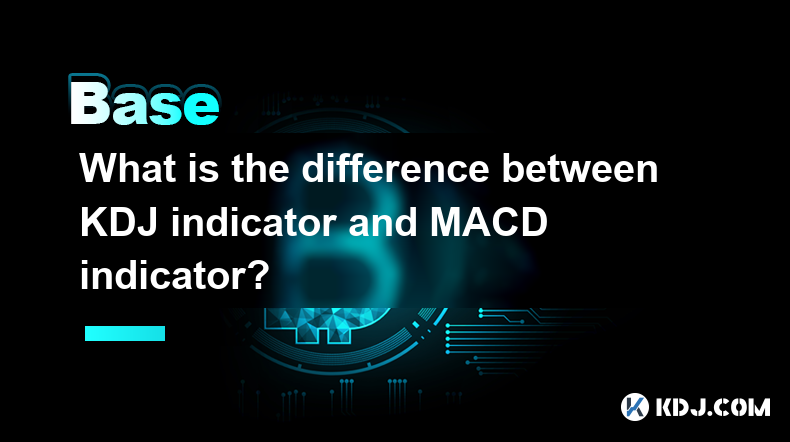-
 Bitcoin
Bitcoin $85,134.1423
0.86% -
 Ethereum
Ethereum $1,882.9872
0.08% -
 Tether USDt
Tether USDt $0.9999
-0.01% -
 XRP
XRP $2.1267
-2.21% -
 BNB
BNB $602.6119
-2.07% -
 Solana
Solana $126.3155
-1.94% -
 USDC
USDC $1.0000
-0.01% -
 Dogecoin
Dogecoin $0.1732
0.20% -
 Cardano
Cardano $0.6830
0.34% -
 TRON
TRON $0.2389
2.17% -
 Toncoin
Toncoin $4.0609
-1.54% -
 Chainlink
Chainlink $13.6750
-2.45% -
 UNUS SED LEO
UNUS SED LEO $9.3981
2.01% -
 Stellar
Stellar $0.2681
-2.14% -
 Sui
Sui $2.4875
2.30% -
 Avalanche
Avalanche $19.4840
-0.66% -
 Shiba Inu
Shiba Inu $0.0...01242
-3.54% -
 Hedera
Hedera $0.1684
-1.60% -
 Polkadot
Polkadot $4.1148
-2.95% -
 Litecoin
Litecoin $83.0925
-2.19% -
 Bitcoin Cash
Bitcoin Cash $306.4919
-2.06% -
 MANTRA
MANTRA $6.2535
-0.54% -
 Bitget Token
Bitget Token $4.6025
-0.96% -
 Dai
Dai $1.0000
-0.01% -
 Ethena USDe
Ethena USDe $0.9999
0.02% -
 Pi
Pi $0.6766
-5.48% -
 Hyperliquid
Hyperliquid $13.5266
-2.56% -
 Monero
Monero $216.1067
-0.56% -
 Uniswap
Uniswap $6.1363
-0.96% -
 Aptos
Aptos $5.3208
-1.08%
How DAO works and its challenges to traditional organizations
DAOs challenge traditional organizations with decentralized governance, transparency, and automation, but face legal uncertainty and scalability issues.
Mar 30, 2025 at 12:43 am

How DAOs Work and Their Challenges to Traditional Organizations
Understanding Decentralized Autonomous Organizations (DAOs)
Decentralized Autonomous Organizations (DAOs) represent a novel organizational structure leveraging blockchain technology. Unlike traditional organizations with centralized control, DAOs operate on a distributed, transparent, and automated system governed by smart contracts. These smart contracts, self-executing agreements with the terms of the agreement directly written into code, automate processes and enforce rules without human intervention. This eliminates the need for a central authority, distributing power among participants.
How DAOs Function: A Step-by-Step Guide
The functionality of a DAO hinges on several key components working in concert. Here’s a breakdown of the process:
Token Creation: DAOs typically issue their own cryptocurrency tokens, representing membership and voting rights. These tokens are often used to participate in governance decisions and access DAO resources.
Smart Contract Deployment: The core rules and logic of the DAO are encoded into smart contracts deployed on a blockchain. These contracts define how the DAO operates, including voting mechanisms, treasury management, and proposal processes.
Proposal Submission and Voting: Members can propose changes or initiatives within the DAO. These proposals are then put to a vote, with token holders casting their votes based on their token holdings. The outcome of the vote is automatically enforced by the smart contract.
Treasury Management: DAOs typically hold funds in a shared treasury, controlled by the smart contracts. These funds are used to finance DAO activities and projects. Access to the treasury is typically governed by the voting mechanisms outlined in the smart contracts.
Execution of Proposals: Once a proposal passes the voting threshold, the smart contract automatically executes the necessary actions. This might involve allocating funds, deploying new projects, or modifying the DAO's rules.
Challenges DAOs Pose to Traditional Organizations
DAOs present several significant challenges to traditional organizational structures. Their decentralized and transparent nature disrupts established hierarchies and power dynamics.
Decentralized Governance: The distributed governance model of DAOs contrasts sharply with the hierarchical structures of traditional organizations. This can lead to slower decision-making processes in some cases, but also fosters greater participation and inclusivity. Traditional organizations often struggle to adapt to this flatter, more participatory model.
Transparency and Accountability: All transactions and governance actions within a DAO are recorded on the blockchain, ensuring complete transparency. This level of transparency is a stark contrast to the often opaque decision-making processes in traditional organizations. This increased transparency can expose inefficiencies and lack of accountability within traditional systems.
Automated Processes: DAOs automate many processes through smart contracts, reducing reliance on human intervention and minimizing the potential for errors or bias. This efficiency can be a significant advantage over traditional organizations, which often rely on complex and time-consuming bureaucratic processes.
Community-Driven Development: DAOs are driven by their community of members, who collectively shape the direction and evolution of the organization. This contrasts with traditional organizations, where strategic decisions are often made by a small group of executives. This community-driven approach can lead to more innovative and responsive organizations, but also presents challenges in coordinating diverse perspectives.
Security Risks: While smart contracts aim to provide security, vulnerabilities can still exist, potentially leading to exploits and loss of funds. Traditional organizations face different security challenges, but the potential for smart contract vulnerabilities is a unique risk for DAOs.
Legal and Regulatory Uncertainty
The legal status and regulatory framework surrounding DAOs are still evolving. The decentralized and borderless nature of DAOs poses challenges for existing legal systems designed for traditional organizations. The lack of clear legal precedents creates uncertainty for both DAO participants and regulators. This uncertainty can hinder the growth and adoption of DAOs.
Scalability and User Experience
Scaling DAOs to accommodate a large number of participants and complex operations can be challenging. User experience can also be a barrier to entry, as interacting with DAOs may require a level of technical proficiency that some users lack. Improving scalability and user experience is crucial for wider adoption of DAOs.
Maintaining Community Engagement
Sustaining active participation and engagement from a large community of members is essential for the success of a DAO. DAOs need to find effective ways to incentivize participation and prevent the dominance of a small group of active members. This requires careful consideration of governance mechanisms and community-building strategies.
Common Questions and Answers
Q: What are the advantages of DAOs over traditional organizations?
A: DAOs offer advantages such as increased transparency, automated processes, decentralized governance, and community-driven development. These features can lead to greater efficiency, accountability, and inclusivity.
Q: What are the limitations of DAOs?
A: DAOs face challenges such as legal and regulatory uncertainty, scalability issues, the potential for smart contract vulnerabilities, and the need to maintain community engagement.
Q: How do DAOs make decisions?
A: DAOs use token-based voting mechanisms, where token holders cast votes on proposals. The outcome of the vote is automatically enforced by smart contracts.
Q: Are DAOs suitable for all types of organizations?
A: DAOs are best suited for organizations that benefit from transparency, decentralization, and community-driven governance. They may not be suitable for organizations requiring rapid, centralized decision-making or those dealing with highly sensitive information.
Q: What is the role of smart contracts in DAOs?
A: Smart contracts are the backbone of DAOs, automating processes and enforcing rules based on pre-defined code. They ensure transparency and enforce the DAO's rules without human intervention.
Q: How can I participate in a DAO?
A: Participation in a DAO typically involves acquiring the DAO's native token, which grants voting rights and access to the DAO's resources. The specific requirements for participation vary depending on the DAO.
Disclaimer:info@kdj.com
The information provided is not trading advice. kdj.com does not assume any responsibility for any investments made based on the information provided in this article. Cryptocurrencies are highly volatile and it is highly recommended that you invest with caution after thorough research!
If you believe that the content used on this website infringes your copyright, please contact us immediately (info@kdj.com) and we will delete it promptly.
- Altcoins Nosedive Up to 50% On Binance, Sparking Confusion Among Investors
- 2025-04-02 18:35:12
- EOS Price Soars Nearly 20% as Vaulta Banking Initiative Boosts Investor Confidence
- 2025-04-02 18:35:12
- EOS (VAULT) Price Surges 20% as the Network Unveils Its Vaulta Banking Advisory Council
- 2025-04-02 18:30:12
- United States Senator Ted Cruz has introduced a new bill that offers tax incentives for cryptocurrency miners using flared natural gas to power mining operations.
- 2025-04-02 18:30:12
- Pi Network's Native Cryptocurrency, PI, Drops 74% From Its All-Time High
- 2025-04-02 18:25:12
- Pendle (PENDLE) Token Attracts Whales as 5 Newly Created Wallets Withdraw 2.66M Tokens From Binance
- 2025-04-02 18:25:12
Related knowledge

In what aspects is Chainlink decentralized?
Apr 02,2025 at 05:49pm
Chainlink is a decentralized oracle network that plays a crucial role in connecting smart contracts on blockchain networks with real-world data. Its decentralization is reflected in multiple aspects, ensuring the network's security, reliability, and integrity. This article delves into the various ways Chainlink achieves decentralization, including its n...

How does Chainlink connect smart contracts with real-world data?
Apr 02,2025 at 03:56pm
Chainlink is a decentralized oracle network that plays a crucial role in connecting smart contracts on blockchain platforms with real-world data. Smart contracts are self-executing contracts with the terms of the agreement directly written into code, but they can only interact with on-chain data. To access real-world data, such as stock prices, weather ...

How to choose the calculation period of KDJ indicator?
Apr 02,2025 at 01:00pm
The KDJ indicator, also known as the Stochastic Oscillator, is a popular technical analysis tool used by cryptocurrency traders to identify potential buy and sell signals. The calculation period of the KDJ indicator is crucial in determining its effectiveness in predicting market trends. In this article, we will explore the factors to consider when choo...

What does it mean when KDJ indicator deviates?
Apr 01,2025 at 03:08pm
The KDJ indicator, also known as the Stochastic Oscillator, is a popular technical analysis tool used in the cryptocurrency market to predict price movements. When the KDJ indicator deviates, it means that the current price of a cryptocurrency is moving away from its typical range, as indicated by the KDJ lines. This deviation can signal potential trend...

How to apply KDJ indicator in short-term trading?
Mar 31,2025 at 10:28pm
The KDJ indicator, also known as the Stochastic Oscillator, is a popular technical analysis tool used by traders to identify potential buy and sell signals in the cryptocurrency market. In short-term trading, the KDJ indicator can be particularly useful due to its sensitivity to price movements. This article will explore how to effectively apply the KDJ...

What is the difference between KDJ indicator and MACD indicator?
Apr 01,2025 at 08:21pm
The KDJ indicator and the MACD indicator are two popular technical analysis tools used by cryptocurrency traders to predict market trends and make informed trading decisions. While both indicators aim to help traders identify potential buy and sell signals, they differ in their construction, interpretation, and application. In this article, we will expl...

In what aspects is Chainlink decentralized?
Apr 02,2025 at 05:49pm
Chainlink is a decentralized oracle network that plays a crucial role in connecting smart contracts on blockchain networks with real-world data. Its decentralization is reflected in multiple aspects, ensuring the network's security, reliability, and integrity. This article delves into the various ways Chainlink achieves decentralization, including its n...

How does Chainlink connect smart contracts with real-world data?
Apr 02,2025 at 03:56pm
Chainlink is a decentralized oracle network that plays a crucial role in connecting smart contracts on blockchain platforms with real-world data. Smart contracts are self-executing contracts with the terms of the agreement directly written into code, but they can only interact with on-chain data. To access real-world data, such as stock prices, weather ...

How to choose the calculation period of KDJ indicator?
Apr 02,2025 at 01:00pm
The KDJ indicator, also known as the Stochastic Oscillator, is a popular technical analysis tool used by cryptocurrency traders to identify potential buy and sell signals. The calculation period of the KDJ indicator is crucial in determining its effectiveness in predicting market trends. In this article, we will explore the factors to consider when choo...

What does it mean when KDJ indicator deviates?
Apr 01,2025 at 03:08pm
The KDJ indicator, also known as the Stochastic Oscillator, is a popular technical analysis tool used in the cryptocurrency market to predict price movements. When the KDJ indicator deviates, it means that the current price of a cryptocurrency is moving away from its typical range, as indicated by the KDJ lines. This deviation can signal potential trend...

How to apply KDJ indicator in short-term trading?
Mar 31,2025 at 10:28pm
The KDJ indicator, also known as the Stochastic Oscillator, is a popular technical analysis tool used by traders to identify potential buy and sell signals in the cryptocurrency market. In short-term trading, the KDJ indicator can be particularly useful due to its sensitivity to price movements. This article will explore how to effectively apply the KDJ...

What is the difference between KDJ indicator and MACD indicator?
Apr 01,2025 at 08:21pm
The KDJ indicator and the MACD indicator are two popular technical analysis tools used by cryptocurrency traders to predict market trends and make informed trading decisions. While both indicators aim to help traders identify potential buy and sell signals, they differ in their construction, interpretation, and application. In this article, we will expl...
See all articles

























































































